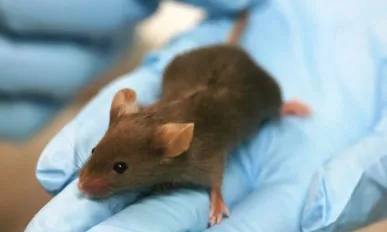EU Serious about Decarbonising its Economy
This week, the European Commission and senior officials from Member States will sit down for the first time to discuss the Commission’s proposals for EU climate and energy governance reform.
New Stem Cell Based Treatment for Rheumatoid Arthritis
EU-funded researchers have developed a new potential treatment for rheumatoid arthritis, based on adult stem cells from body fat, or adipose tissue.
How Plants Evolved and What This Means For Our Food Supply
An EU-funded project investigating how oxygen in the air millions of years ago might have affected the evolution of plants is making important discoveries that could inform our approach to climate change, space exploration and ensuring future food supplies. Today, scientists in areas as varied as food security, climate change and space exploration need to know more about plants – how they live and grow and what effect environmental conditions can have on them. A key part of understanding plants is knowing how they evolved. The EU-funded OXYEVOL project is investigating how variations in atmospheric oxygen levels over millions of years might have affected the appearance of new plant species. “We are exploring the relationship between oxygen concentration and plant evolution,” says University College Dublin’s Prof. Jennifer McElwain, who received a European Research Council Starting Grant to undertake the project. OXYEVOL’s researchers are looking closely at the plant fossil record and comparing it to the known history of atmospheric oxygen content. Meanwhile, they are also undertaking a series of highly novel ‘mini-world’ experiments, in which living plant species with diverse evolutionary histories are being exposed to different atmospheric oxygen and carbon dioxide concentrations in a growth chamber. The most significant result so far is the observation that greater numbers of plant species seem to have originated when atmospheric oxygen concentrations were highest. We already know that the appearance of complex organisms over a billion years ago was linked to a rise in atmospheric oxygen levels. OXYEVOL’s results suggest that oxygen has also been an important evolutionary…
The ‘Triple-Win’ Way to Reduce Carbon in the Atmosphere
Reducing the amount of carbon in the atmosphere is a key priority facing the world today as it attempts to mitigate the scale and effects of climate change.
Collaborative Mouse Research will Benefit Study of Human Disease
Sequencing the mouse and human genomes has provided scientists detailed knowledge of both species’ genetic composition, and highlighted their startling similarity.
Measuring the Universe to Catch a Glimpse of our Past
A recently completed EU-funded project developed not only a new means of measuring these cosmic distances, but also discovered galaxies at the point of their creation.
A Faster Way to Fix Broken Bones and Torn Cartilage
European scientists have developed pioneering new technology that could help regenerate damaged cartilage and bone tissue and get patients back on their feet quicker than ever before.
The Very Small is Big in Manufacturing
Small means big business these days. Consumers are demanding ever smaller, more portable devices, with extra features, better performance and energy efficiency.
Universal Phone Charger Planned for EU Countries
The European Union have been taking steps towards the mandatory introduction of a common mobile phone charger, which could universally power up all handset makes.
VW to Reach 10 Million Mark for Annual Car Sales in 2014
German car-maker Volkswagen (VW) expects to sell more than 10 million vehicles across its multi-brand group this year
























